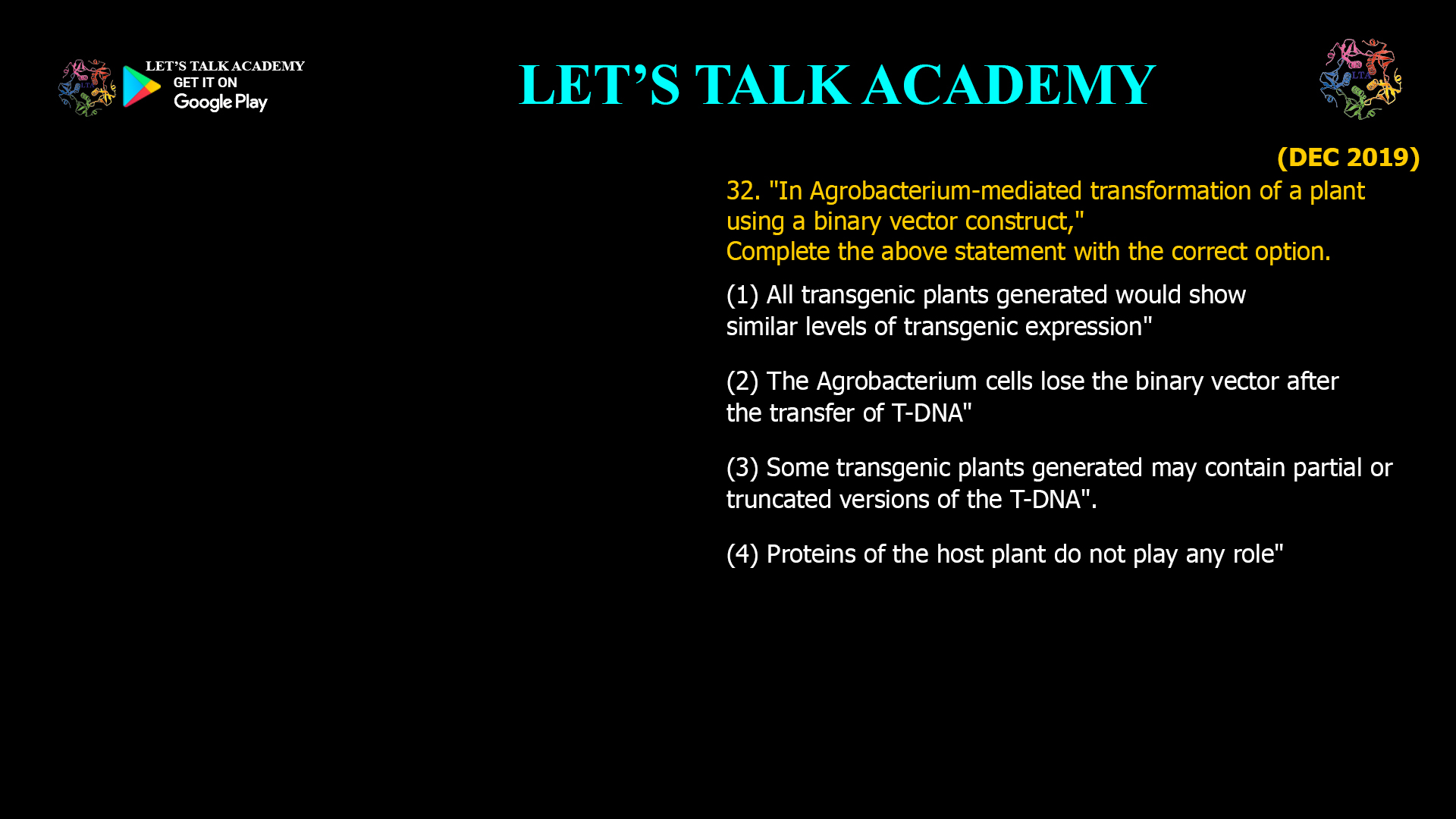- “In Agrobacterium-mediated transformation of a plant using a binary vector construct,”
Complete the above statement with the correct option.
(1) All transgenic plants generated would show similar levels of transgenic expression”
(2) The Agrobacterium cells lose the binary vector after the transfer of T-DNA”
(3) Some transgenic plants generated may contain partial or truncated versions of the T-DNA”.
(4) Proteins of the host plant do not play any role”The correct completion is (3) “Some transgenic plants generated may contain partial or truncated versions of the T‑DNA”.
Why option (3) is correct
During Agrobacterium-mediated transformation, the T‑strand is generated between the right and left border sequences and then processed, transported and integrated into the plant genome. Exonucleases and DNA repair events often delete nucleotides from one or both ends of the T‑strand before or during integration, so many independent events produce partial or truncated T‑DNA insertions rather than perfect full-length copies. Different transformants from the same binary vector can therefore carry different lengths or rearranged T‑DNA and show variable transgene expression.
Why the other options are incorrect
-
“All transgenic plants generated would show similar levels of transgenic expression”
-
Expression varies widely between independent lines because of position effects (different genomic insertion sites), copy number differences, local chromatin state, and possible truncations or rearrangements. It is never expected that all lines express at the same level.
-
-
“The Agrobacterium cells lose the binary vector after the transfer of T-DNA”
-
The binary plasmid is maintained in Agrobacterium by its own origin of replication and bacterial selection markers. Transfer of T‑DNA does not require or cause systematic loss of the plasmid; bacteria typically retain the vector.
-
-
“Proteins of the host plant do not play any role”
-
Host factors are crucial for many steps: perception, cytoplasmic trafficking, nuclear import, chromatin remodeling and DNA repair that mediates T‑DNA integration. Plant proteins like VIP1, importins, DNA repair components, etc., strongly influence transformation efficiency and outcome, so this statement is clearly false.
-
SEO‑oriented introduction (for article use)
In Agrobacterium-mediated transformation using a binary vector system, individual transgenic plants rarely carry identical T‑DNA insertions. Host DNA repair processes frequently generate partial or truncated T‑DNA copies, and genomic position effects further diversify transgene activity, making it accurate to state that some transformants contain truncated T‑DNA, while assumptions of uniform expression, vector loss from bacteria, or lack of host-protein involvement are incorrect.
-



